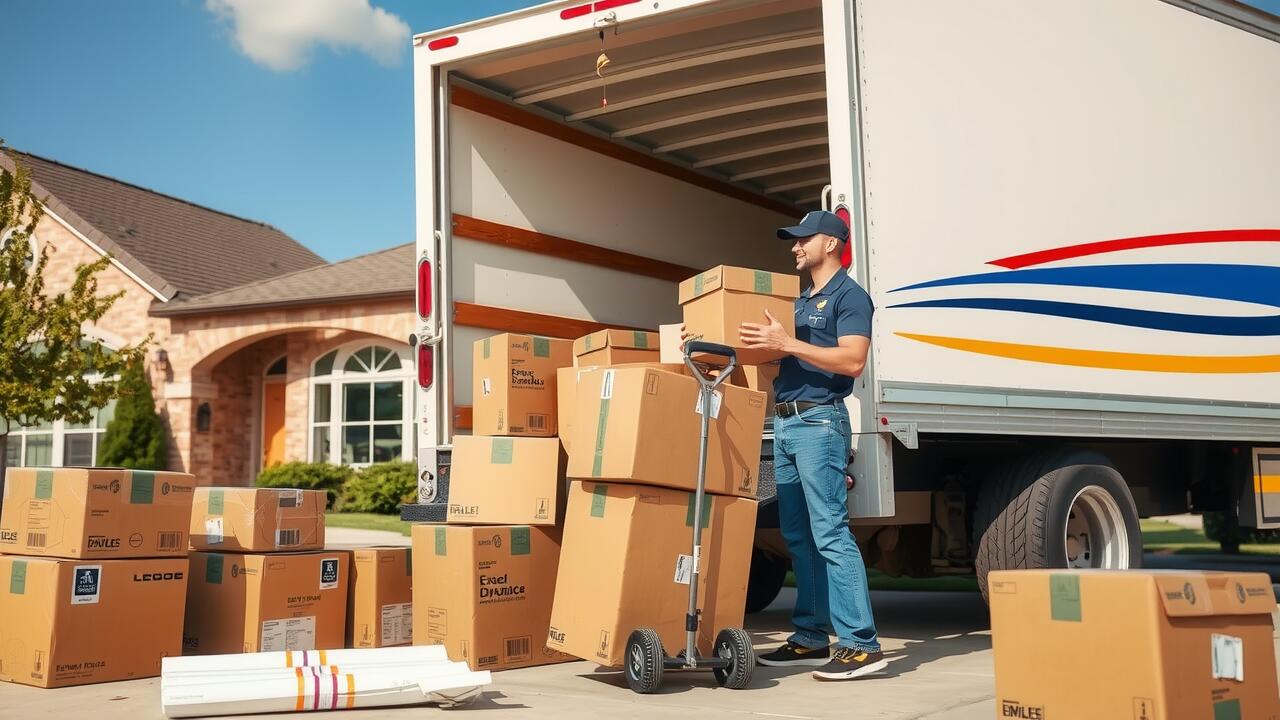
Table Of Contents
Intermodal Transportation
Intermodal transportation involves the use of multiple modes of transport to move goods from one location to another. This method typically combines rail, road, and sometimes maritime transport to optimize efficiency and cost. By using containers designed for easy transfer between different transport modes, businesses can minimize delays and maximize the use of available infrastructure. Long Distance Moving in West Virginia, United States, takes advantage of intermodal options by providing a seamless transition between trucking and rail systems.
The benefits of intermodal transportation extend to sustainability as well. It often results in lower fuel consumption due to the efficiency of rail transport over long distances. Furthermore, by integrating various modes of transport, companies can adapt to both regional demands and specific cost constraints. Enhanced planning through intermodal systems ensures that even long-distance logistics can maintain timeliness and reliability, an essential factor for businesses operating in competitive markets.
Benefits of Combining Different Transport Modes
Combining different modes of transportation in logistics offers significant benefits for long-distance moving. Intermodal transport allows for more efficient use of resources, resulting in reduced costs and transit times. By integrating rail, truck, and sometimes sea freight, companies can take advantage of the strengths of each mode. For instance, trains can handle large volumes over long distances more cost-effectively, while trucks can provide the necessary flexibility for last-mile deliveries.
In regions like West Virginia, the availability of various transport options can lead to better pricing strategies. The ability to switch between modalities based on cost, speed, and distance enhances service reliability for businesses and consumers alike. Long distance moving in West Virginia, United States can particularly benefit from this approach, making it easier to navigate the state’s diverse geography while keeping transportation costs manageable. Ultimately, intermodal transportation promotes a competitive edge in logistics by optimizing routes and minimizing delays.
Comparing Different Modes
When considering the various methods for transporting goods over long distances, one must evaluate the inherent characteristics of each mode. Freight trucking remains popular due to its flexibility and direct access to remote locations. Rail transport, while often more economical for bulk shipments, typically requires additional steps for last-mile delivery. Barges and shipping by sea can be cost-effective for far-reaching destinations, yet they involve longer transit times and dependencies on port capacities.
In regions like West Virginia, United States, the choice of transportation can greatly impact overall shipping costs. Factors such as road infrastructure, availability of rail services, and proximity to waterways play crucial roles in determining the most economical option. Although intermodal solutions offer a combination of transport efficiency, local geography influences the accessibility and connectivity of each mode. Prioritizing regional strengths can lead to substantial savings in long distance moving in West Virginia, United States.
Cost Analysis Across Transportation Methods
When evaluating the costs associated with different transportation methods, several factors come into play, including type of goods, distance, and urgency. For instance, trucking services might offer flexibility and local deliveries, while rail transport typically presents lower rates for bulk freight over longer distances. The combination of these factors can significantly affect the overall pricing strategy for businesses looking to optimize their supply chain. In regions like West Virginia, United States, where infrastructure might influence routing options, businesses must carefully consider the most cost-effective means to move their products.
Moreover, maritime transport often emerges as a favorable option for international shipping due to its capacity to accommodate large volumes at comparatively lower rates. However, when it comes to Long Distance Moving in West Virginia, United States, the choice might lean more towards rail or trucking for efficiency and speed within domestic markets. The analysis of these varying methods highlights how businesses can strategically navigate costs while ensuring effective delivery of goods, taking into account localized economic conditions and transport infrastructure.
Regional Differences in Transportation Costs
Transportation costs can vary significantly across different regions, influenced by factors like infrastructure, local regulations, and access to transportation hubs. In areas with well-developed logistical networks, such as major urban centers, the cost per mile tends to be lower due to higher efficiency and competition among carriers. Conversely, rural areas may face elevated costs due to limited service options and longer routes required to reach major distribution points. This discrepancy becomes particularly evident when considering scenarios like Long Distance Moving in West Virginia, United States, where geographical challenges can contribute to increased shipping expenses.
Geography also plays a critical role in shaping transportation prices. Regions with challenging terrain, such as mountains or rivers, often require specialized vehicles and longer travel times, both of which add to costs. Furthermore, proximity to key ports or interstate highways can facilitate more economical routes, while regions lacking such access may incur higher freight charges. Consequently, understanding these regional differences is essential for businesses and individuals alike when planning for long-distance transportation needs.
How Geography Impacts Pricing
Geography plays a significant role in determining transportation costs. In regions where infrastructure is well-developed, such as major urban centers, the logistics of moving goods can be more efficient. This efficiency often translates to lower costs for businesses and consumers alike. Conversely, rural areas or regions with limited access to transportation networks may face higher expenses due to increased travel distances and the need for specialized transport solutions.
In the context of Long Distance Moving in West Virginia, United States, geographic features such as mountain ranges and rivers can affect pricing. These natural barriers complicate routes, often requiring more time and fuel to navigate. As a result, movers may charge a premium for services in these areas compared to regions with straightforward transportation routes. Understanding these geographical factors helps businesses better estimate costs and optimize their logistics strategies.
FAQS
What is intermodal transportation?
Intermodal transportation involves using multiple modes of transport, such as trucks, trains, and ships, to move goods over long distances efficiently and cost-effectively.
What are the benefits of combining different transport modes?
Combining different transport modes can lead to reduced costs, improved delivery times, and enhanced flexibility in handling various types of cargo.
How do transportation costs compare across different methods?
Transportation costs can vary significantly depending on the method used, with options like rail often being more cost-effective for bulk shipments, while trucks may be more suitable for smaller loads over shorter distances.
How do regional differences affect transportation costs?
Regional differences can significantly impact transportation costs due to factors such as infrastructure availability, fuel prices, and local regulations, which can vary widely from one area to another.
How does geography influence pricing in transportation?
Geography plays a crucial role in transportation pricing, as factors like distance, terrain, and access to transport networks can affect the overall cost and efficiency of transporting goods.
